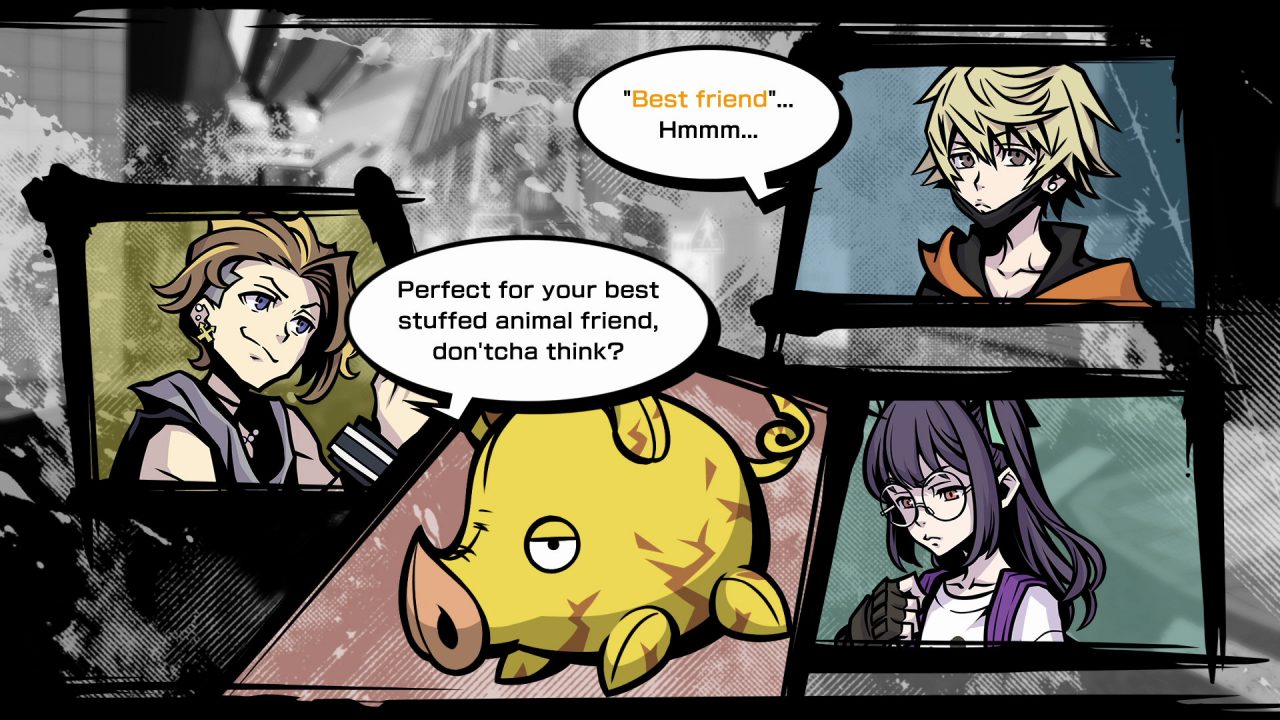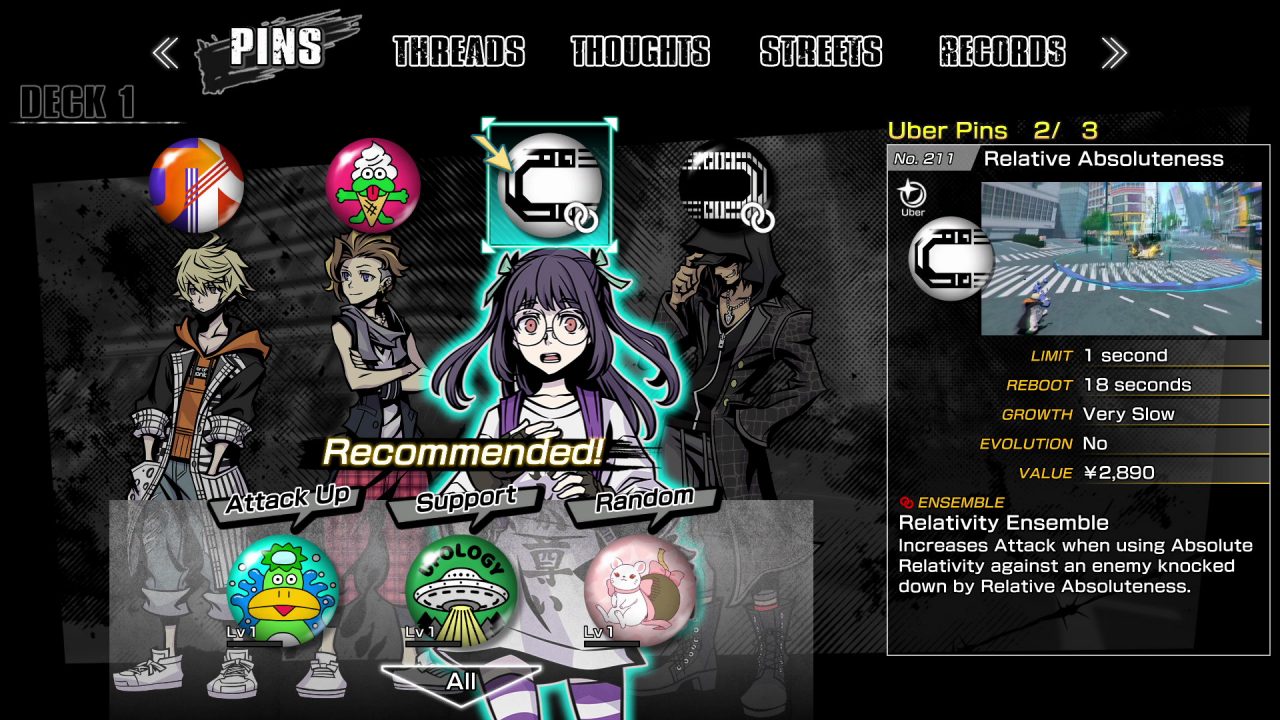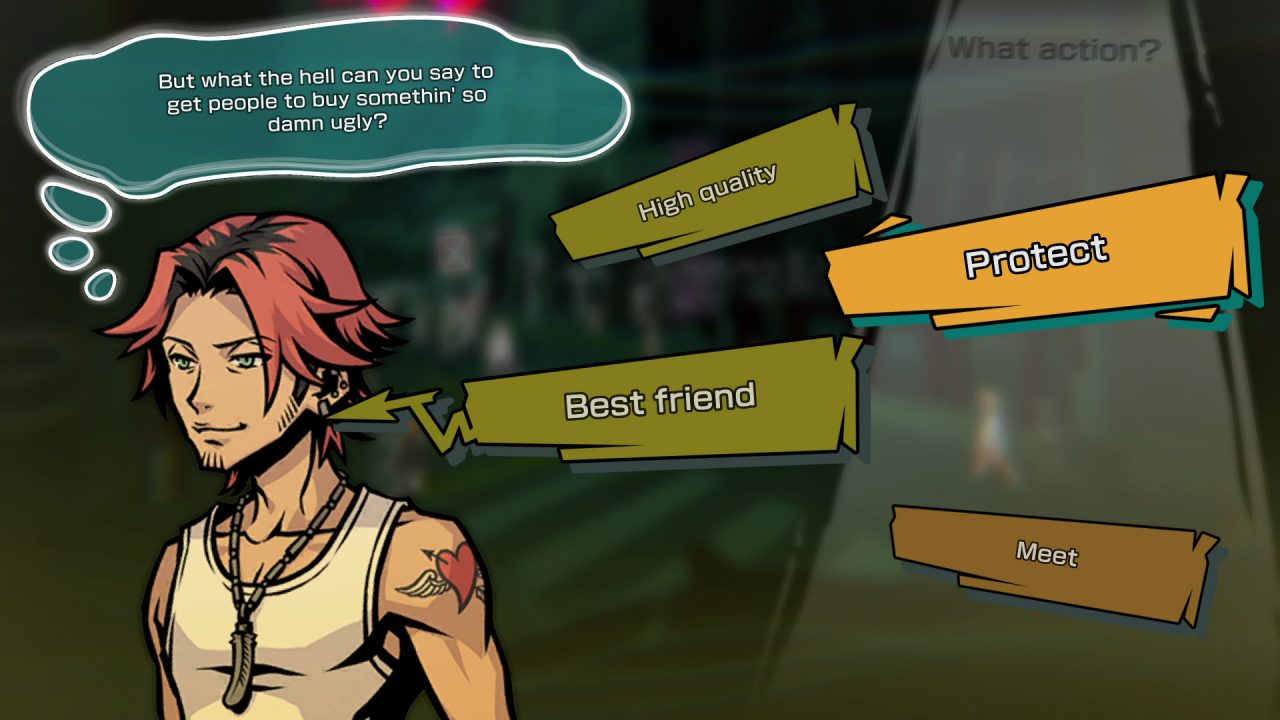When RPGFan did its top five favorite RPGs of all time feature some years ago, The World Ends with You (TWEWY) snuck into my list. When the original title debuted, I had all but lost faith in Square Enix’s ability to produce anything like they used to. A fresh premise, one of the most unique battle systems ever created, and flawed, likable characters drove me to borderline fandom. Did I mention the banger soundtrack? One of the greatest of all time. Waiting all this time for a sequel left me wondering if Neku and gang would ever make a return, and then NEO: The World Ends with You was announced.
I balked at the trailer sadly. The clown car-esque character introductions had me worried. Nevertheless, I couldn’t turn down the opportunity to cover a sequel to one of my favorite games of all time. After about 50 or so hours of estimated game time just to beat the game — not counting the collectathon the game practically begs you to engage in — I have to say that I am unimpressed.
Unimpressed isn’t even the right word, though. Disappointed? Burned? Emotionally exhausted? Is it possible to be emotionally exhausted because of a complete lack of emotional investment? That has to be a thing because I lived it. Although TWEWY absolutely killed it in almost every respect — style, visuals, soundtrack, story, characters, combat, lore, etc. — NEO: The World Ends with You lost sight of what made the original so good above all else: heart.
Like its predecessor, NEO: The World Ends with You follows two characters in Shibuya enjoying life in the real world, who soon find themselves thrust into the Underground (afterlife), an alternative reality in which they must play a game to fight for their lives. Each day they are given a task to earn points, and at the end of the week, one team — the winners — get anything they desire, while the losers get “erased.” I’ll let you mull over what that means. The tasks are relatively varied, with each team expected to erase some noise (monsters), engage a person, fight over territory, etc. Will our heroes make it out of the Reapers’ Game? The suspense must be stifling.

When playing NEO: The World Ends with You, straight out of the gate, something’s amiss. The dialogue hit me immediately: it’s meaningless. Any good storytelling uses dialogue efficiently. It characterizes, pushes the plot forward, or entertains. Here, it does none of those. Most of the first several hours feel like a visual novel with Rindo (lead) and Fret (supporting lead) bantering back and forth in painful confusion, jabbering on like a couple of children. Well, that’s probably because they are children — adolescents; however, that doesn’t mean the dialogue has to be tired and hackneyed. They go on and on into a vacuum. At the end of a string of dialogue, nothing is gained. The same ideas are repeated more times than I bothered to count until another character hits them over the head with the truth. Sure, realizing that one may be “dead” is hard to accept, but clearly, several fantastical events have occurred, and the two carry on as if reality is somehow as they remember it.
As the story continues, our heroes meet enemies, friends, and mysterious folk whose motives are largely unknown. Unfortunately, few of these characters have any depth or varied personalities whatsoever. Several characters are one-note with some sort of obsession (math, otaku fangirlism, reversi — yes, reversi), never say anything of consequence until the end of the game, or are merely there to tap dance on stage as if to say, “Hey, remember me from the first game?!” and then tap dance off. The hamfisted references to the first game — the characters — are like a smack in the face because I don’t think most fans want a shallow handwave. If a character has to return, give them purpose. Say something of consequence. Show us a meaningful sacrifice or backstory, don’t tell.
In a game like NEO: The World Ends with You, telling instead of showing is especially heartbreaking because the world has so much potential and vibrance to alight the imagination. The team for the first game delivered endless opportunities to build on the fascinating mythos it expertly introduced. This time, instead, we get monologues about a character’s history and why some event is so tragic to them. NEO is distinctly set in the TWEWY universe, no doubt, but the problem is that everything either hasn’t evolved (the shops and restaurant mechanics) or has become less complex and captivating (noise’s influence on the real world). The front door’s beautiful, the lawn immaculately manicured, and the previous owners power washed the hell out of the siding, but when you walk inside, someone stuffed Play-Doh into all of the outlets.

The visuals are amazing in one respect but a disaster in another. As far as artwork and style are concerned, NEO: The World Ends with You dominates. Each character is beautifully represented and pops off the screen during dialogue sequences. Shibuya has this odd fisheye lens thing going on wherein the buildings curve inward, which works given the surreal world our heroes are thrust into. Unfortunately, the reliance on still images and lack of consistent voice acting stunt the game’s ability to tell an engrossing story. Remember, the vapid dialogue is the dominant problem, but having static characters talk back and forth doesn’t help matters any. The creators do a fine job changing up how characters speak to each other by moving panels around the screen after appropriate breaks in dialogue, à la a comic book or manga, but it doesn’t do enough to liven up the irritatingly benign interactions.
When the story finally (and it takes a while) gets to an intense moment, I’m already so checked out from spending dozens of hours falling asleep on my couch between idle chatter that I don’t even really care. To make matters worse, the intense moments aren’t foreshadowed, nor do they provide any sound logic for why they’re occurring. By the end of the game, so many weird strategies are taking place to solve a catastrophic problem that I turned to my wife — who was equally confused — and said, “Okay, I guess we just have to accept that all of these ideas work because… the game says so.” Random characters show up out of nowhere who have abilities that have never even been hinted at to fix problems that had no forecasting whatsoever. The game is just a series of deus ex machina, and none of it is set up in a way that would satisfy players who actively want to know more about this world and how it works.
Characters barely built upon die throughout NEO: The World Ends with You, but the game has a gigantic cast and all of the focus is on Rindo and his friends, so I honestly felt nothing. The game clearly wanted players to mourn the erasure of these people, but with no investment or meaningful interactions, their fates mean nothing. The linearity provides no opportunity to get to know some of these characters better, and none of the systems in place encourage character growth. Instead, the systems just encourage the mindless collection of pins, attire, food, music, books, and the completion of a Noisepedia. None of that stuff matters if I don’t have an emotional investment in the story or its actors. Add some systems like in the Devil Survivor or Persona games where I can choose to spend time with people; I would have been elated if they had just blatantly stolen those mechanics. Anything would have been better than what we got.

Enough about the disappointing story. What about the combat? Modern consoles would have a hard time replicating the frenetic combat that took advantage of the Nintendo DS’s unique capabilities. In NEO: The World Ends with You, the battles capture the chaos that some loved and others hated in the original game. Each character in the party can equip a pin, which gives them a single ability that can be spammed, charged, or held to almost universally damage enemies. After the pin’s energy is depleted, it must cool down before being used again. All the while, players must avoid enemy attacks. The heroes share one health pool. Players can dodge roll through attacks or simply move away from enemies to avoid getting hit, but depending on the pin equipped, this can limit one’s ability to deal damage. This is important, as speed must be balanced with good defense to earn a higher grade, which means a greater likelihood of gaining pins or money.
Usually, the combat is mindless fun. The pins have enough variety to encourage some experimentation while the artwork and attack visuals foster a degree of urgency to “catch ‘em all.” Although I previously criticized the reliance on collecting, it’s actually fun to collect pins, fill out the codex, try new food, etc. The problem is that’s where the focus seems to have been during development.
Eating is one of the primary ways to power up the team in NEO: The World Ends with You. Every character has food preferences, and picking the right food is a simple task of seeing how they react at the top of the screen. Leveling up simply adds HP to the team’s pool, which, while important, is less necessary than raising characters’ attack, defense, and style. Style is handy because new attire can grant bonuses in addition to stats (HP, attack, defense) if a character’s style is high enough. These additional abilities won’t blow anyone’s mind, but they add some incentive to raise one’s style if the perk adds that extra something to decking out the team. Unfortunately, like in TWEWY, the emphasis on what brand of clothing or pins to use seems glossed over. Sure, additional bonuses can be earned for consistently wearing or using one brand, but these seem like tedious details to fuss over.

I’m happy to say that NEO: The World Ends with You controls amazingly well. If I died in combat, it was my fault. Enemy attacks can be difficult to predict, especially given the fast-paced nature of battles, but if one slows down and focuses, everything functions just fine. Musically, the new tracks are fine — not to the standard of TWEWY, but acceptable. Conversely, the remixed versions of the first game’s tracks are phenomenal. The voice acting is pretty good, though I’d argue some of the casting is inappropriate. I got used to most of the voices by the end of the game, but some characters just don’t sound right. At times, I found young characters sounded too old while others just had weird accents that didn’t suit the art style.
I could go on at greater length about NEO: The World Ends with You; it was an emotional rollercoaster for me, to be sure. Normally, I avoid having expectations going into a game so as not to cloud my judgment or set myself up for disappointment. I had reservations going into this because of the trailer. Still, I came out deflated in a huge way. As a fan, I admittedly enjoyed every cameo from the first game, but after the initial glee wore off, I realized that it honestly felt a little disrespectful to the source. Not everyone needs to show up, and if they do, put some meat into the occasion. If I were to point at one thing NEO did wrong, it’d be that it has too many characters and the writers didn’t know how to drill down and focus on quality relationships. That aside, I still don’t understand leaving most of the game a mystery until the very end and then just making up reasons or abilities with no prior justification. Can this game be enjoyed? Certainly. The combat alone will be fun for some, but TWEWY was so much more than its gameplay.



